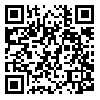BibTeX | RIS | EndNote | Medlars | ProCite | Reference Manager | RefWorks
Send citation to:
URL: http://jdm.tums.ac.ir/article-1-396-en.html
Statement of Problem:Various methods have already been suggested to measure the working length in root canal therapy among which the use of paper point, tactile sense, radiography and electronic apex finder instruments can be named. Investigations on EAL (Electronic Apex Locator) indicate that these instruments can reduce the number of required radiography to a great extent. Moreover, in special cases such as patients with high risk reflex, pregnant women, the mental disabled and handicapped and also in cases with special anatomical structures these instruments are proper substitutes for radiography.
Purpose: The aim of this study was to compare the accuracy of an Iranian made apex finder instrument with Neosono Ultima EZ and radiography.
Materials and Methods: This study was conducted on 51 mandibular molars, devoid of calcification, internal and external resorption, severe root curve or fracture, which were extracted due to periodontal disease or severe caries. All the specimens were washed in 2.5% hypochlorite sodium and washing with water, kept in 10% formalin solution, under room temperature.
Results: The accuracy of the Iranian instrument was measured (81.8%) similar to that of radiography (81.2%). But the accuracy of Neosono Wtima EZ was (92.9%) which was higher than the two other methods.
Conclusion: No statistically significant difference was found between Neosono Ultima EZ instrument and two other groups, using SPSS 10 statistical soft ware.
| Rights and Permissions | |
 |
This work is licensed under a Creative Commons Attribution-NonCommercial 4.0 International License. |




